Discover creative landscaping ideas combining hostas and daylilies to enhance your garden’s beauty and functionality.
Hey green thumbs and garden enthusiasts! Ever felt like your hostas and daylilies could use that extra sprinkle of magic pixie dust?
I’m here with some totally fresh, never-seen-before ideas that’ll have your neighbors peeking over the fence in envy.
Let’s dive into unique and quirky ways to make these classic plants the centerpiece of your garden wonderland! Ready to turn your garden into a masterpiece? Let’s dig in!
Look Inside:
Mixed Border Beds
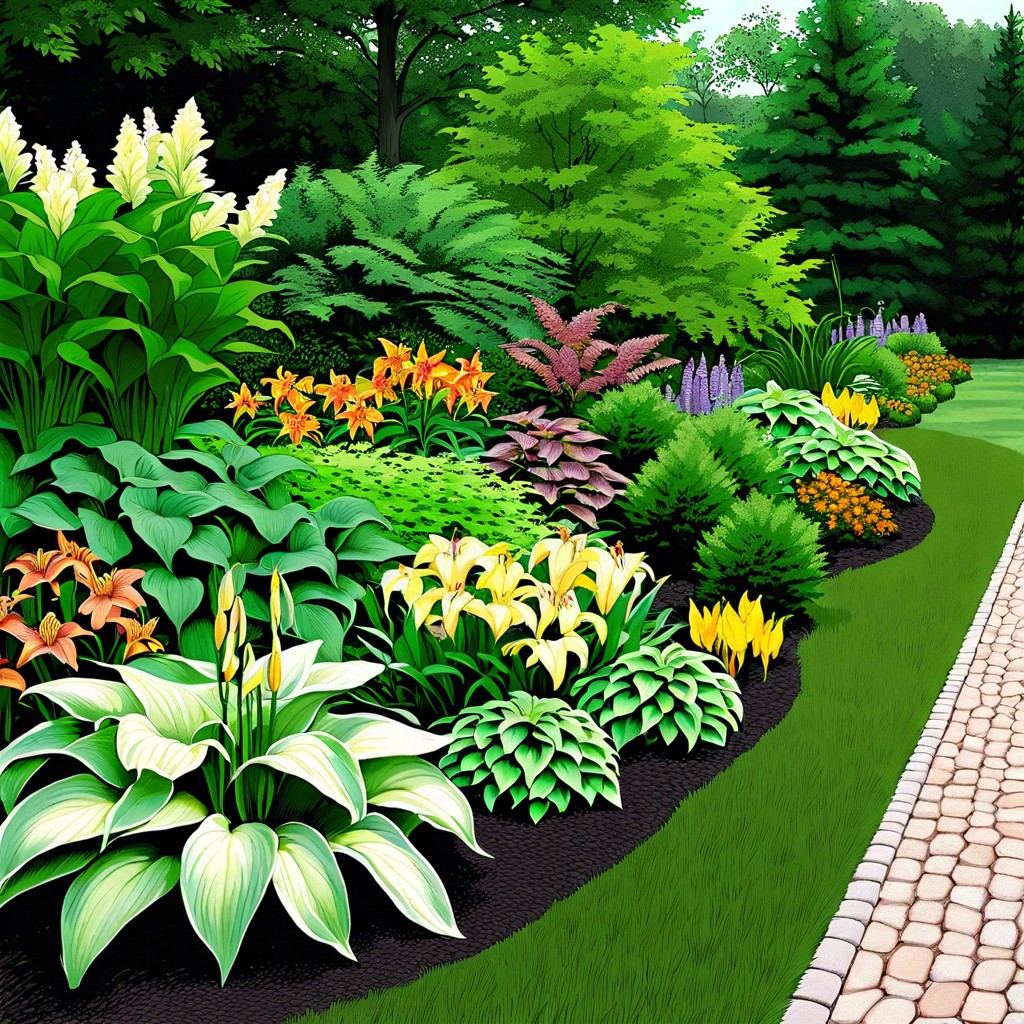
Mixed border beds combine the lush foliage of hostas with the vibrant blooms of daylilies, creating a dynamic landscape. This planting strategy offers a harmonious blend of colors, textures, and heights for an eye-catching garden design. The strategic pairing of these plants ensures year-round interest and visual appeal.
Hostas As Ground Cover, Daylilies As Accents
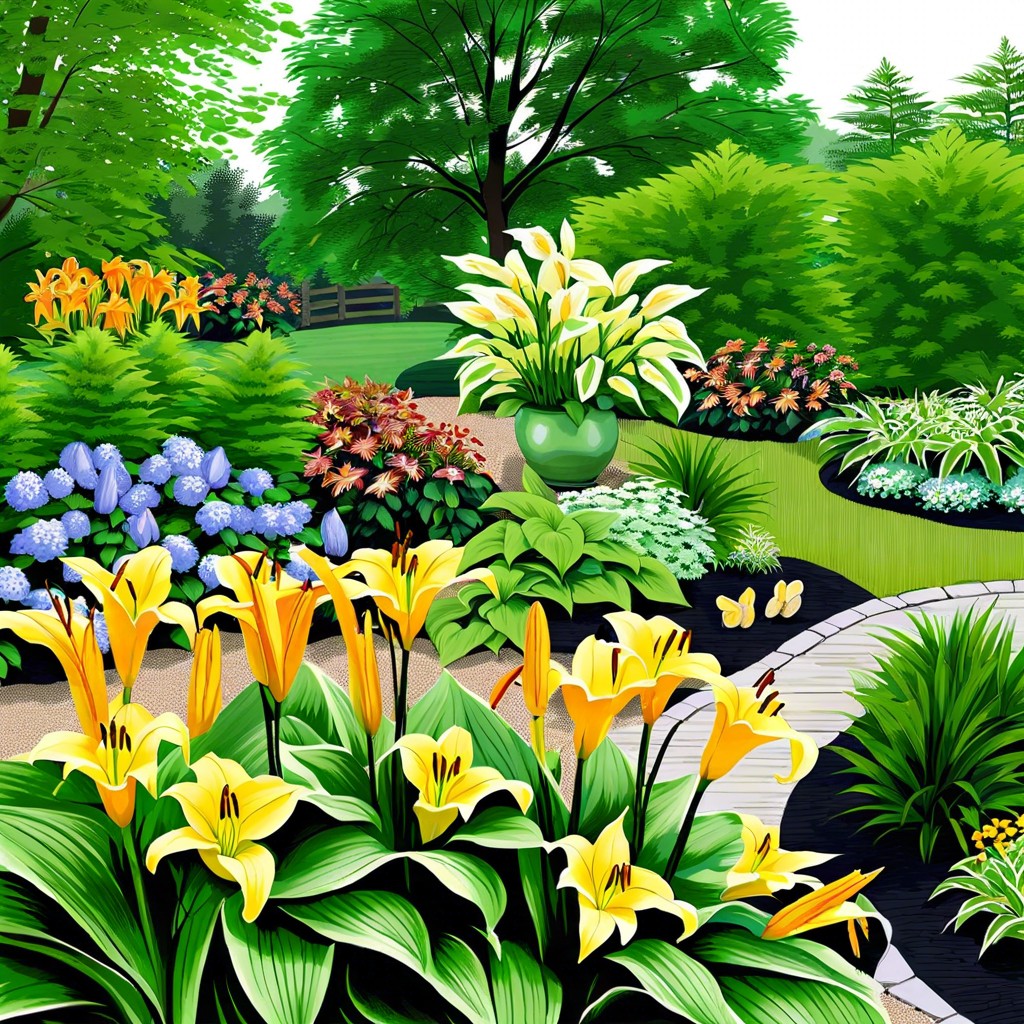
Hostas are used to create a lush ground cover, while daylilies add pops of color and variety to the landscape. The different textures and heights of these plants complement each other beautifully. This combination adds depth and visual interest to your garden beds.
Tiered Garden Design
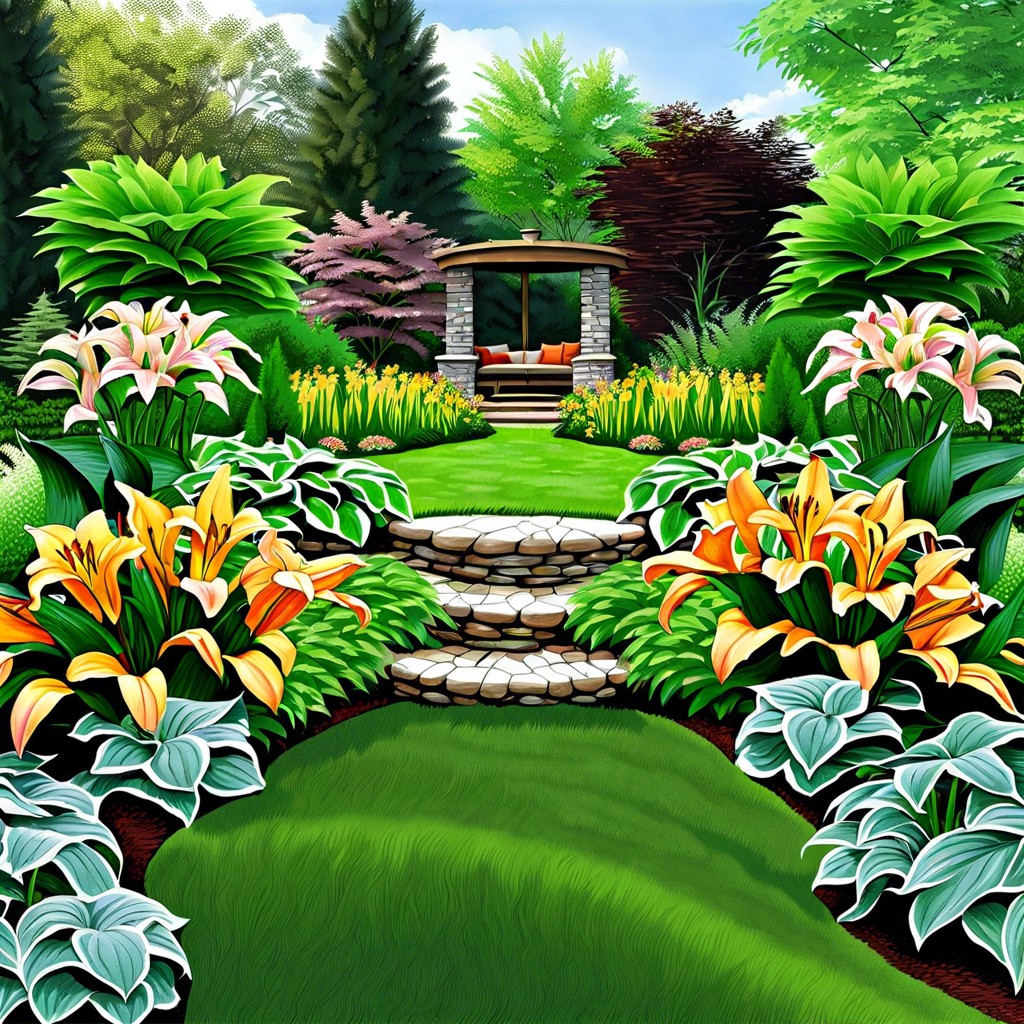
Tiered garden design creates a visually dynamic landscape by incorporating plants at varying heights within the same area. This approach enhances depth and interest in your garden, making it more aesthetically pleasing. Hostas and daylilies can be strategically placed on different levels to add dimension and structure to your outdoor space.
Hostas in Shady Areas, Daylilies in Sunny Spots

Hostas thrive in shaded areas, adding lush greenery to dim corners of your garden. Daylilies, on the other hand, prefer the sun, bringing bursts of vibrant color to sunny spots in your landscaping. By strategically placing these plants based on their light preferences, you can create a visually balanced and flourishing garden space.
Alternating Rows
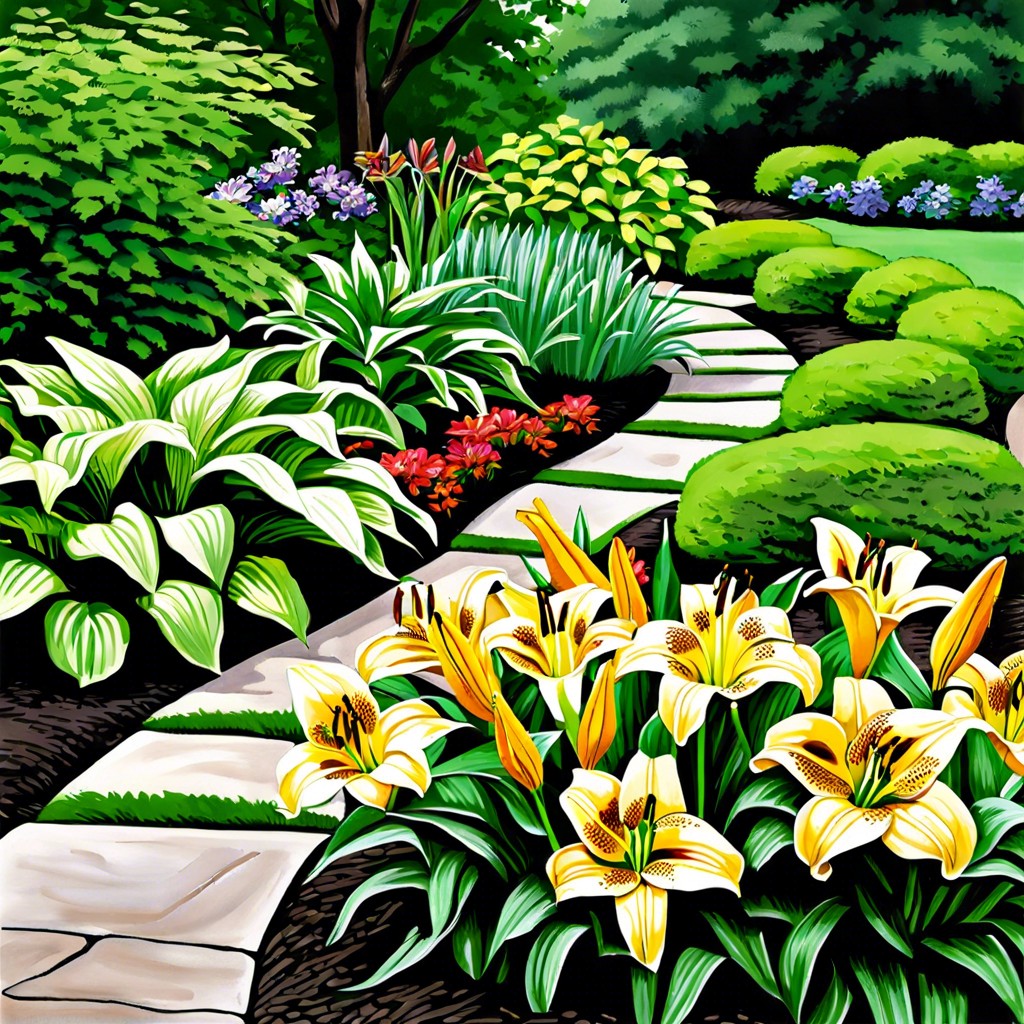
One way to enhance your landscaping with hostas and daylilies is by planting them in alternating rows. This arrangement creates a visually striking pattern in your garden bed, adding depth and variety to your outdoor space. By alternating the plants, you can showcase the unique characteristics of both hostas and daylilies.
Daylilies in Containers, Hostas in Ground
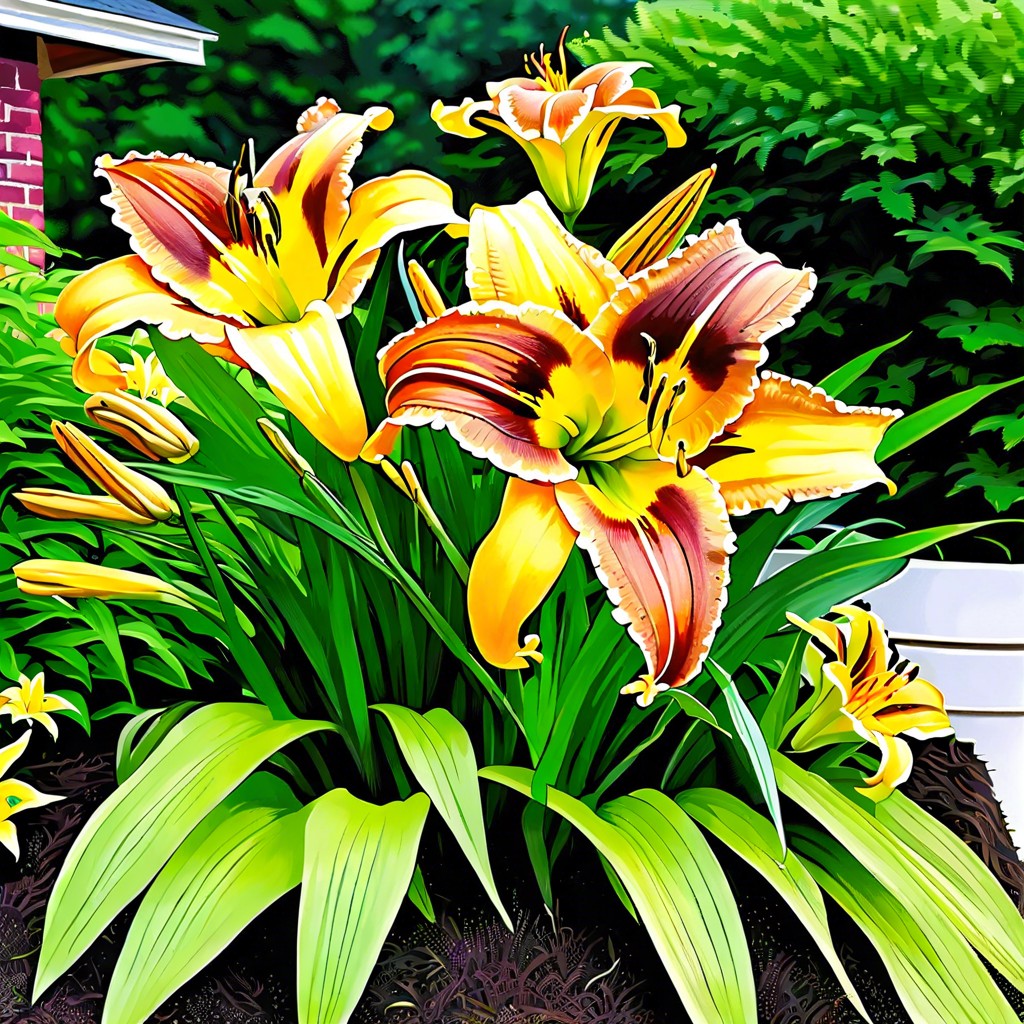
Daylilies are perfect for container planting, adding pops of color and interest on porches or patios. Hostas, on the other hand, thrive when planted directly in the ground, creating lush beds with their vibrant foliage. By combining these different planting methods, you can bring variety and versatility to your landscaping design.
Pathway Edging
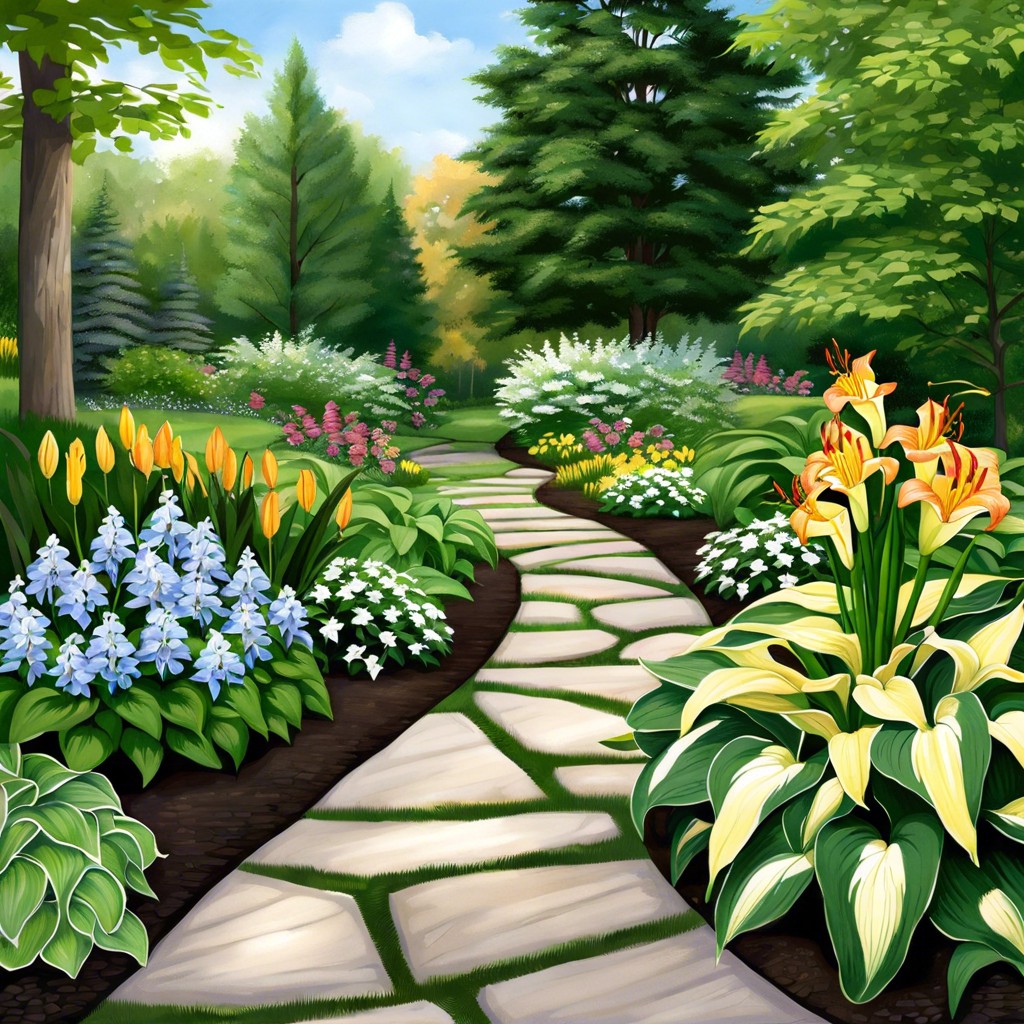
Daylilies and hostas can be used to outline and decorate pathways in your garden, creating a stunning visual effect. The contrasting textures and colors of these plants can enhance the overall appearance of your outdoor space. Pathway edging with hostas and daylilies adds a touch of elegance and charm to your garden landscape.
Island Flower Beds
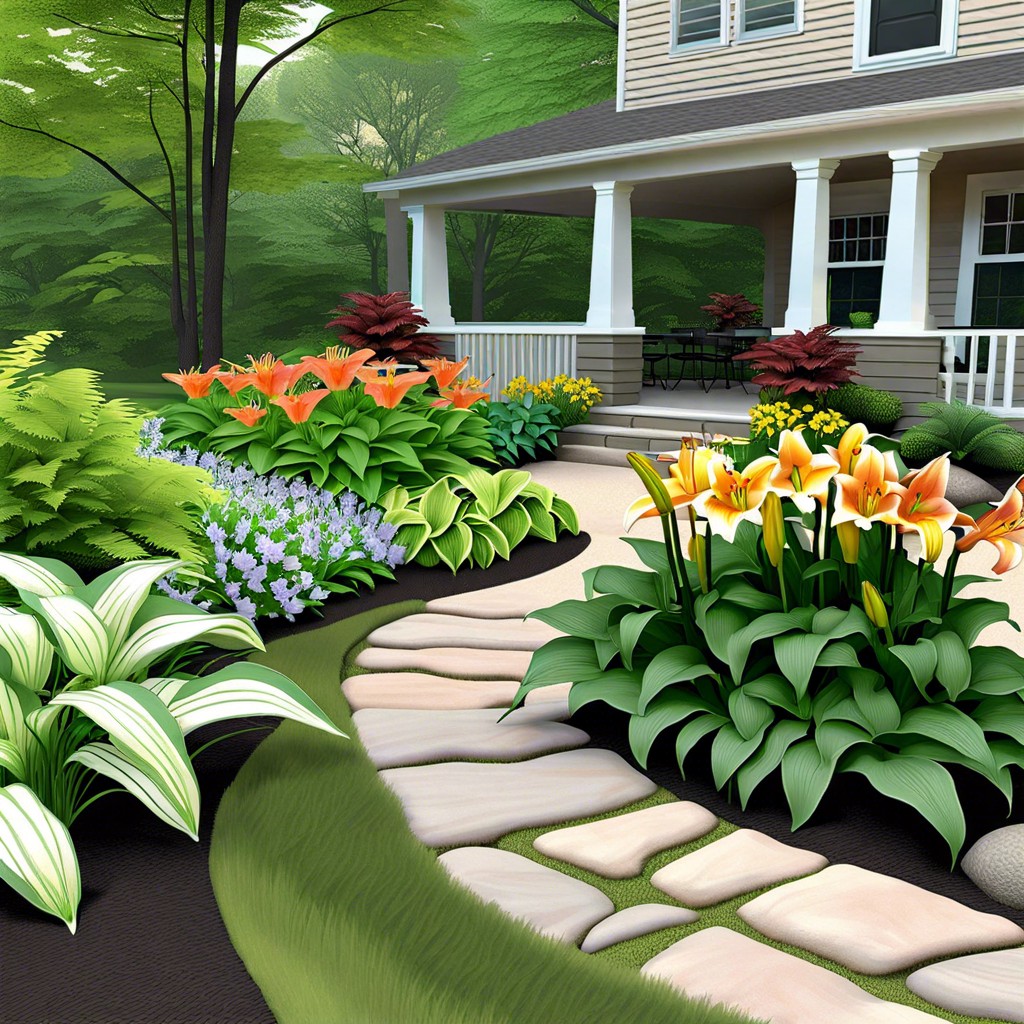
In island flower beds, hostas and daylilies are combined to create eye-catching focal points in your garden. These beds can be placed strategically in your yard to break up large spaces and add visual interest. Hostas’ lush foliage and daylilies’ vibrant blooms work together harmoniously in these self-contained garden areas.
Color-coordinated Sections

Color-coordinated sections in landscaping with hostas and daylilies involve grouping plants based on their hues. This design technique adds visual interest and harmony to your garden space. By arranging plants with similar colors together, you can create a cohesive and eye-catching display.
Hostas Around Trees, Daylilies Along Fences
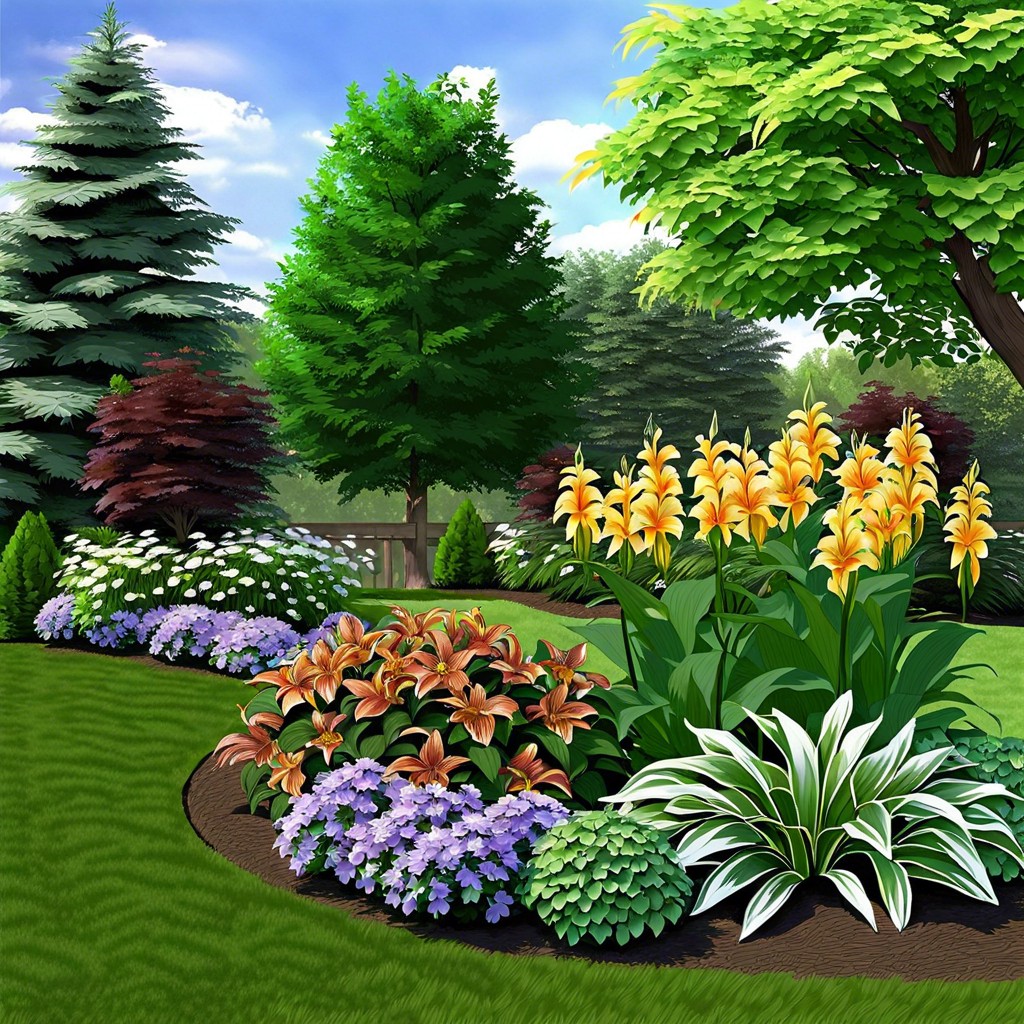
Hostas thrive in the shade provided by trees, creating a lush and green backdrop. Daylilies, on the other hand, add vibrant pops of color along fences, enhancing the overall aesthetic. This strategic placement maximizes the visual impact and complements the natural elements of your landscaping design.
Rock Garden Integration
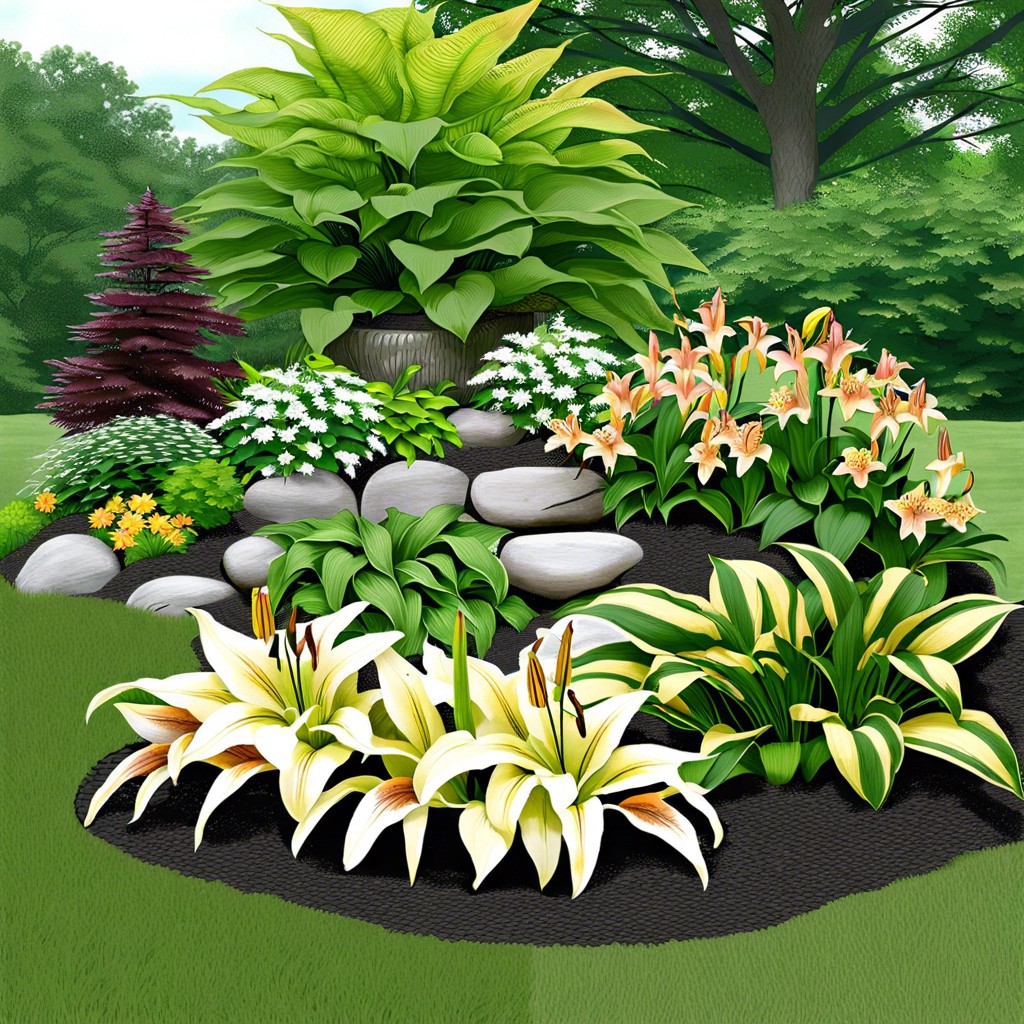
Nestle hostas and daylilies among rocks to create a stunning rock garden. The textures and shades of these plants contrast beautifully with the rugged terrain. This integration adds depth and character to your landscape design.
Pondside Plantings
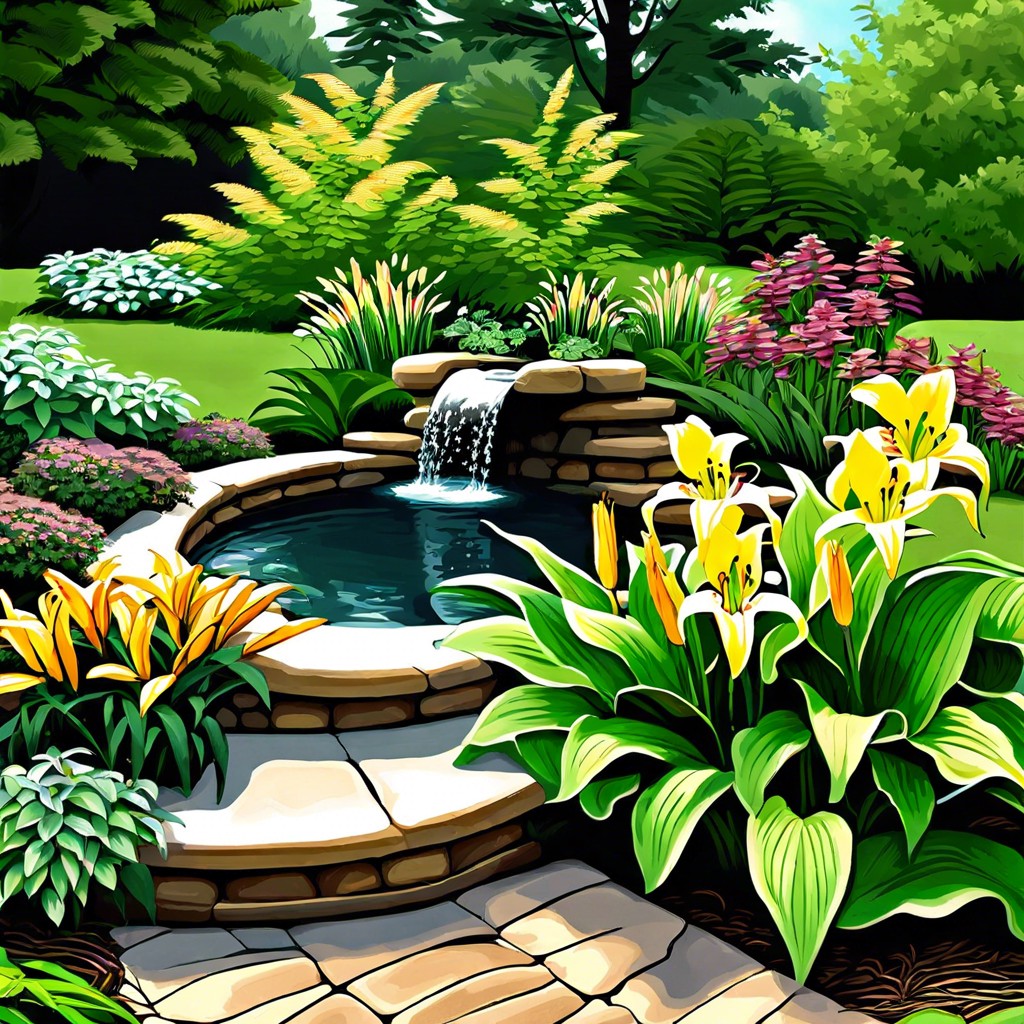
Pondside plantings introduce lush greenery and vibrant blooms near water features, creating a serene and picturesque landscape. Hostas and daylilies strategically placed alongside ponds or water elements add color and texture to the area. These plants contribute to a harmonious blend of elements, enhancing the overall aesthetic appeal of the garden.
Patterned Mosaic Layout
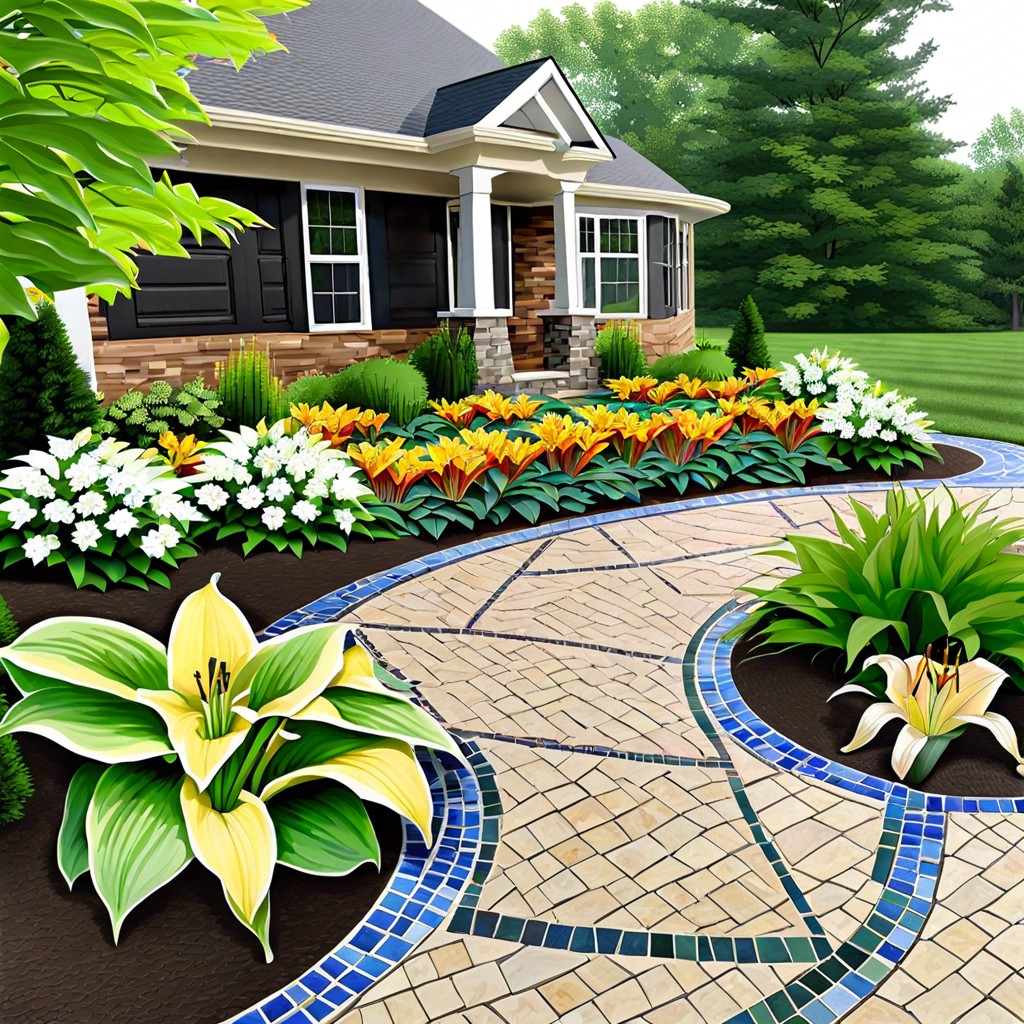
Within a garden landscape, the patterned mosaic layout blends hostas and daylilies into intricate designs, resembling a living tapestry. It creates visual interest and a dynamic flow throughout the garden space, enticing the eye to explore each unique pattern. This layout showcases the versatility and beauty of combining these two popular plants in a harmonious and artistic manner.
Mixed Heights and Textures
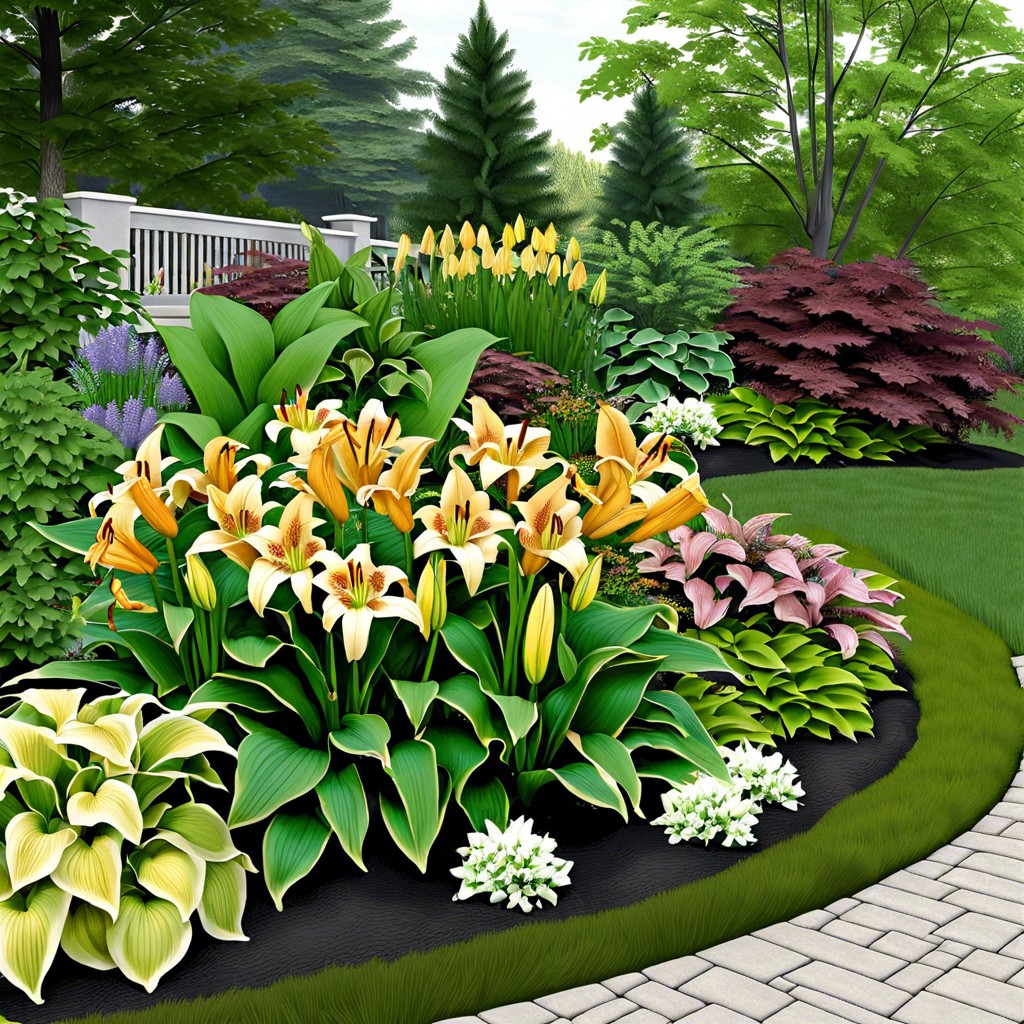
Mixing heights and textures in a landscaping design with hostas and daylilies adds visual interest and dimension to the garden. By combining tall and short plants with different leaf shapes, you create a dynamic and varied look. This technique creates a harmonious balance in the garden bed, making it visually appealing and engaging.
Naturalized Woodland Garden
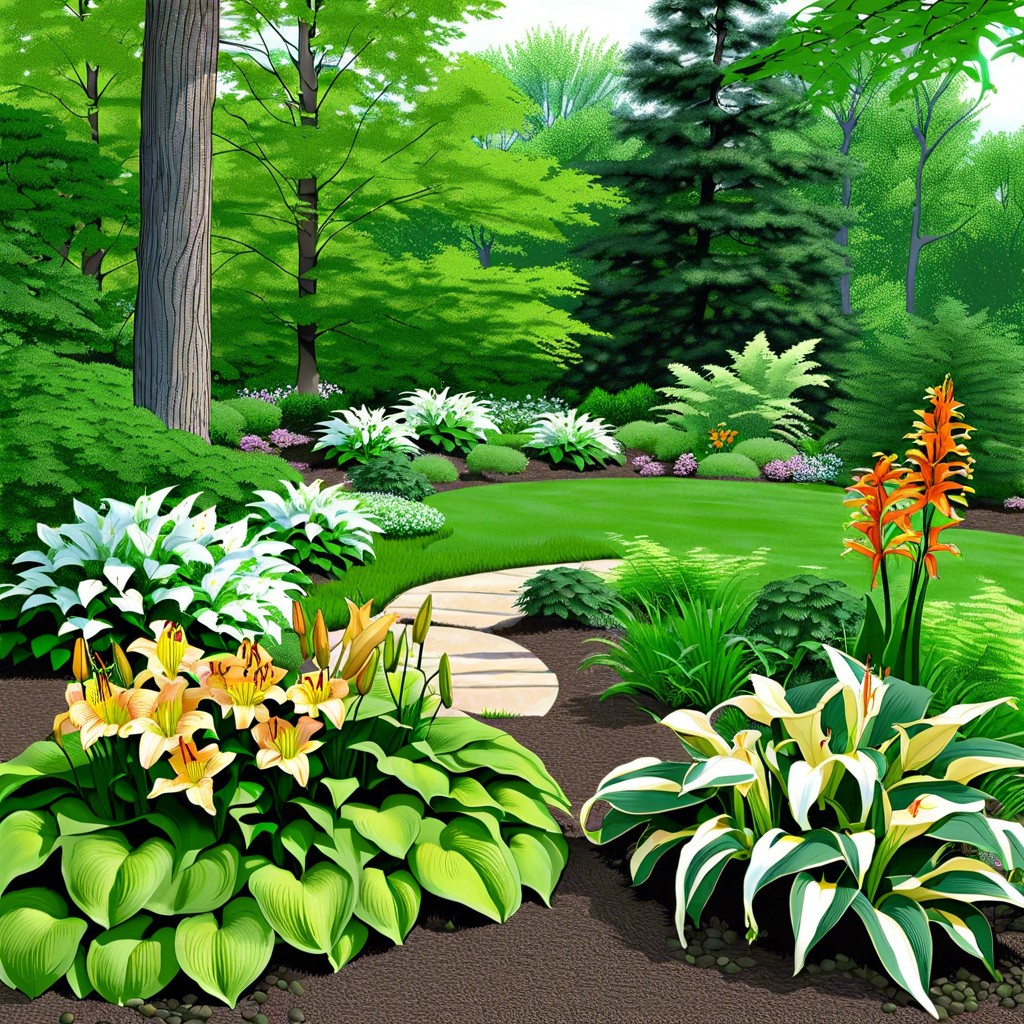
In a Naturalized woodland garden, hostas and daylilies blend seamlessly with the surrounding trees and shrubs, creating a harmonious woodland oasis. These plants thrive in the dappled sunlight and rich, organic soil found in wooded areas, requiring minimal maintenance once established. By mimicking a natural forest environment, this garden style offers a peaceful and low-maintenance landscaping option for nature lovers.